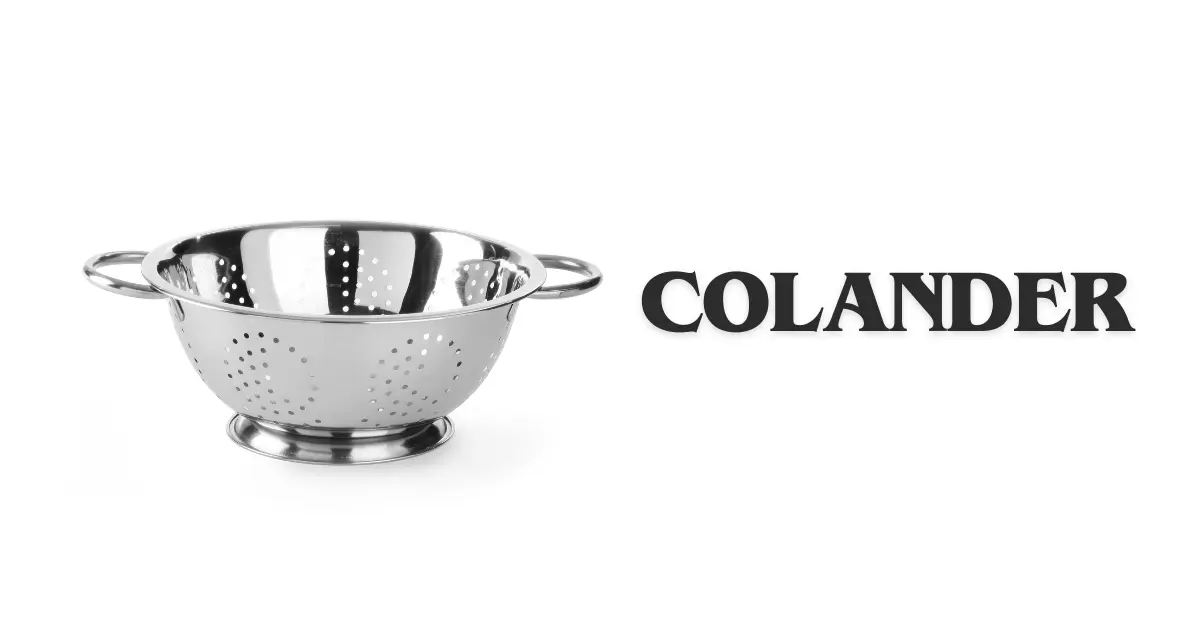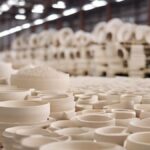A colander is one of the most essential kitchen tools, designed to drain liquids from food like pasta, vegetables, and grains. Whether you’re a home cook or a professional chef, selecting the right colander can make food preparation faster and more efficient. In this comprehensive guide, we’ll explore different types of colanders, their uses, materials, and how to pick the best one for your needs.
Why a Colander is a Kitchen Must-Have?
A colander simplifies tasks like rinsing fresh produce, straining pasta, or washing quinoa. Its perforated design allows water to drain while keeping food intact. Without a colander, these everyday kitchen chores would be far more tedious.
Types of Colanders:
Not all colanders are the same. Here are the most common types:
1. Metal Colanders:
-
Pros: Durable, rust-resistant (if stainless steel), and easy to clean.
-
Cons: Can be noisy and may dent if dropped.
2. Plastic Colanders:
-
Pros: Lightweight, affordable, and available in various colors.
-
Cons: Less durable and may retain odors over time.
3. Silicone Colanders:
-
Pros: Collapsible for easy storage, heat-resistant, and lightweight.
-
Cons: Less sturdy compared to metal or plastic.
4. Ceramic Colanders:
-
Pros: Attractive design, ideal for serving.
-
Cons: Fragile and heavier than other materials.
How to Choose the Best Colander?
When selecting a colander, consider these factors:
1. Size and Capacity:
-
A large colander is ideal for families, while a smaller one suits individuals.
-
Look for a capacity that matches your typical cooking needs.
2. Handle Design:
-
Sturdy handles provide a better grip, especially when draining hot pasta.
-
Some colanders come with hooks to hang over the sink for hands-free draining.
3. Perforation Size:
-
Smaller holes prevent tiny grains like rice from slipping through.
-
Larger holes allow faster draining for pasta and vegetables.
4. Stability:
-
A colander with a flat base sits securely in the sink, reducing spills.
Colander vs. Strainer: What’s the Difference?
Many people confuse a colander with a strainer. Here’s a quick comparison:
| Feature | Colander | Strainer |
|---|---|---|
| Hole Size | Larger holes | Smaller, finer mesh |
| Primary Use | Draining pasta, washing veggies | Filtering broths, sifting flour |
| Material | Metal, plastic, silicone | Mostly metal or fine mesh |
| Stability | Often has feet or a wide base | Usually handheld or bowl-shaped |
While both tools help separate solids from liquids, a colander is best for bigger tasks, whereas a strainer is ideal for finer filtering.
Creative Uses for a Colander:
Beyond draining pasta, a colander can be used for:
-
Washing fruits and vegetables – Rinse produce efficiently under running water.
-
Thawing frozen food – Place frozen items in the colander and run cold water over them.
-
Making yogurt cheese – Line the colander with cheesecloth to strain yogurt.
-
Draining canned goods – Remove excess liquid from beans or tuna easily.
Maintenance and Care Tips:
To keep your colander in top condition:
-
Hand wash plastic and silicone colanders to prevent warping.
-
Use a brush to clean food particles stuck in the holes.
-
Avoid harsh chemicals that may damage the material.
-
Store properly to prevent bending or cracking.
Conclusion:
A colander is a simple yet indispensable kitchen tool that improves efficiency in food preparation. Whether you prefer stainless steel for durability or silicone for easy storage, the right collander can make cooking tasks quicker and more convenient. Consider size, material, and functionality when choosing the best one for your kitchen.
FAQs:
1. What is the best material for a collander?
Stainless steel is the most durable and long-lasting option.
2. Can I use a collander in the dishwasher?
Metal collanders are usually dishwasher-safe, but plastic and silicone may warp over time.
3. How do I prevent my collander from slipping in the sink?
Choose one with rubber grips or a stable base to keep it secure.
4. What size collander is best for a family of four?
A 5 to 6-quart collander is ideal for draining pasta and washing vegetables.
5. Can a collander be used for steaming food?
No, a colander is for draining, not steaming. Use a steamer basket instead.
6. Are collapsible collanders worth buying?
Yes, they save space and are great for small kitchens, but may not be as sturdy as metal ones.
By understanding the different types and uses of a collander, you can select the perfect one to streamline your cooking process. Happy draining!












